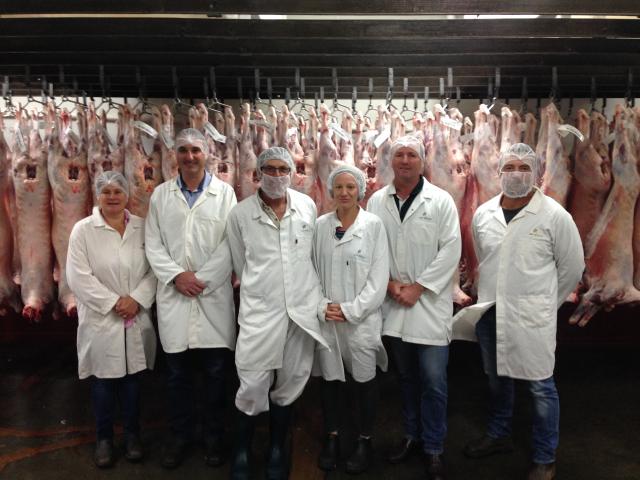SIBI drives sheep producer interest in electronic identification

Participants in the SIBI sheep study tour to regional Victoria in August 2016 recently enjoyed an informative reunion tour of V&V Walsh and Kingston Rest feedlot. The event provide a great opportunity to bring together supply chain participants in the sheepmeat industry and discuss opportunities presented by integrating technology across the supply chain, including the opportunities for individual carcase traceability.
Recent increases in on-farm adoption of EID ear tags has opened new opportunities for the processing sector to become more ‘e-ready’. EID tags can be used with technology such as DEXA, an objective carcase measurement tool that allows for individual carcase tracking.
This could provide opportunities for the producer to receive direct feedback from processors in the future — for example producers might retrieve individual carcase feedback through an online data portal, using that information to make adjustments to their genetics to better deliver a product that meets market and consumer preferences.
Integrating EID technology in the feedlotting industry may also improve efficiency and profitability. There is a reported $0.10-$0.35 loss per lamb due to time off feed during mustering and curfew prior to weighing.
Real efficiencies can be gained by drafting up lambs just once on multiple criteria such as weight, condition score, if crutching is required and any intervention due to compromised wellbeing. Investing in EID technology provides the opportunity for lambs to be drafted just once according to these criteria and for data collected to be recorded in a data management software package against the lamb’s EID.
SIBI is investigating a proposal developed by a large feedlotter and a local processor to improve efficiency in drafting lambs as they enter a feedlot. The ultimate aim is to develop a product that can improve efficiency and profitability in feedlots through the design of a multi-selector drafting unit that can draft lambs into eight directions. Current autodrafters are only restricted to drafting into three or five directions and are restrained to drafting by weight or EID determined criteria. Novel aspects of this include advanced high speed cameras.
The project is being supported by SIBI through its scholarships program, which is led by Development Officer Justin Hardy.
Some of the design concepts being planned include:
- three individual lanes for fast throughflow
- thermal imagery sensing to detect compromised wellbeing
- high speed optical cameras to select on conformation and dags.
Justin said “This project is in its conceptual stage and our goal is to attract postgraduate engineering students to work with industry to design and build the integrated software to operate the drafting unit. We hope to have a postgraduate student in place by early next year to work on this concept.”
“In the future, major feedlots that supply lambs to processors will potentially be able to benefit from this investment into technology.”
For further information, contact Justin Hardy on +61 (0)8 9892 8408 or email justin.hardy@dpird.wa.gov.au.
